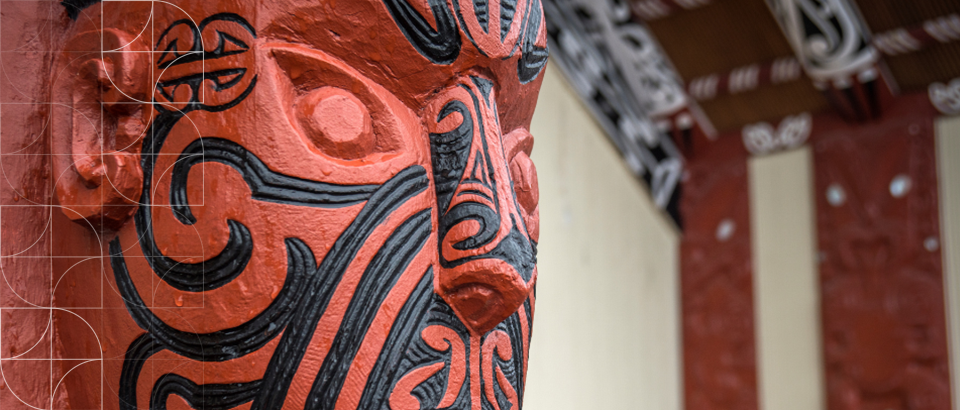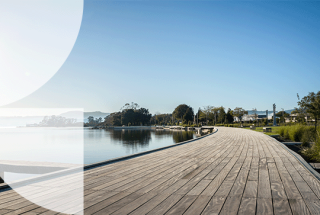Cultural evidence and the continued draw of the overall judgment

Cultural evidence and the continued draw of the overall judgment
Tuesday 21 December, 2021
In a recent High Court decision[1], the Court addressed the correct approach to evidence on cultural effects, and the “overall judgment” approach which still tempts decision-makers who find themselves pulled in different directions.
Background
Ngāti Hē’s Marae on Maungatapu Peninsula sits within a larger area that the Hapu occupied historically. Large parts of that area have been taken for various reasons over the years, including for the construction of electricity transmission lines in 1958. Ngāti Hē have been unhappy with the alignment from the beginning and were therefore supportive of Transpower’s proposal to remove some of the most problematic poles as part of a realignment. However, the proposed realignment’s new poles were closer to the Marae and Kohunga, an outcome that the Hapu considered worse than the status quo. Despite their opposition before the joint Council hearing and the Environment Court, the Council’s decision to grant consent for the realignment was upheld by the Court. Despite the Hapu’s evidence to the contrary, the new alignment’s adverse cultural effects were considered overall de minimus, with some adverse effects of the existing alignment being removed. The Environment Court concluded that, overall, the proposal better met the purpose of the RMA than the status quo.
Cultural Evidence
On appeal, the High Court found that concluding cumulative cultural effects of the realignment were de minimus, despite Ngāti Hē’s clear evidence to the contrary, went beyond a matter of weight and amounted to an error of law. Cultural evidence must be assessed along with other evidence, and where the view presented is considered, consistent and genuine, it ought to be considered as determinative. To say otherwise would be inconsistent with rangatiratanga guaranteed by article 2 of the Treaty of Waitangi, with s 8 of the RMA, and with case law that confirms that Mana Whenua are best placed to identify cultural impacts of development. It would also be inconsistent with policies in the relevant plan that recognised Tangata Whenua are best placed to identify their cultural relationship with their ancestral lands, water, and sites of significance.
Overall Judgment
Consistent with King Salmon and RJ Davidson Family Trust, a Court will refer to Part 2 if a careful purposive interpretation and application of the relevant policies requires it. In the decision under appeal, the Environment Court acknowledged the need to give effect to the National Policy Statements according to their particular terms rather than on the basis of a broad overall judgement. However, the High Court found that its subsequent analysis took an overall judgment approach, which amounted to an error. What is required is a close and careful reading of the specific plans relevant to the proposal. If these are not sufficient to address the question at hand, look to the next document up the RMA hierarchy, which is given effect to by the documents below it. These may not explicitly direct how conflicts between competing documents in the same tier are to be resolved, but the specific language used will indicate which policy ought to prevail, and whether any bottom lines are established.
Conclusion
The structure of the RMA provides for the recognition of cultural effects on the environment, with documents in the subsequent hierarchy addressing these effects more specifically. When assessing the cultural effects of proposals, decision-makers must be guided by the language of the relevant plans and statements, adhere to any bottom lines created by them, and rely on the credible evidence of Tangata Whenua as experts in such effects. An overall judgment as to whether a proposal with such effects satisfies the sustainable management purpose of the Act is no substitute for such an analysis.
Inquiry into the Natural and Built Environments Bill: Select Committee reports back
On 2 November 2021, the Environment Select Committee released its report on the Exposure Draft of the Natural and Built Environments Bill. The Bill is intended to replace the part of the Resource Management Act (RMA) which covers environmental regulation and land use. The Select Committee report recommended a number of changes to the Bill and indicated that additional work was required to clarify the purpose of the Bill.
Purpose of the Bill and Treaty of Waitangi
One of the key changes in the Bill is the greater recognition of Māori environmental views and Te Tiriti o Waitangi. One of the Bill’s purposes is to enable Te Oranga o te Taiao to be upheld, a concept which expresses the intergenerational importance of environmental wellbeing to Māori. The Select Committee agreed with the inclusion of this concept in the Bill but felt that further work was needed to develop and refine what Te Oranga o te Taiao means in the context of this Bill, due to the difficulty in directly transplanting Te Ao Māori concepts directly into legislation.
The Bill also requires decision-makers to give effect to the principles of Te Tiriti o Waitangi, contrasted with the RMA, which merely requires that they be taken account of. However, the Select Committee considered that the Bill requires more detail and direction of how decision makers should give effect to Te Tiriti.
Environmental bottom lines
The Select Committee supported the introduction of compulsory environmental limits to protect air, biodiversity, habitats and ecosystems, coastal waters, estuaries, freshwater, and soil but only for the purposes of protecting the ecological integrity of the natural environment, and/or human health. The Select Committee recommended removing the power for local authorities to set their own environmental limits to reduce regional variations but recommended that the Government consider introducing an exception to these limits relating to the provision of infrastructure in order to allow continued growth throughout New Zealand. If an environment is degraded below the environmental limit when the Bill takes effect, there will be a transitional environmental limit until the environment improves.
Environmental outcomes
The Select Committee was concerned that the Bill favours the protection of the natural environment over the improvement of the built environment and recommended a greater emphasis in the Bill on developing the built environment to reflect the Bill’s dual goal of enabling development while protecting and restoring the natural environment. The Select Committee also clarified that the goal of protecting and restoring the natural environment should be accomplished overall, through the new National Planning Framework and natural and built environment plans, rather than as part of every consent.
Next steps
The Government is due to release its response to the Select Committee report by 31 January 2022 and still intends to introduce the full Natural and Built Environments Bill in mid-2022, along with the Strategic Planning Bill. The proposed new framework represents a huge change in approach to land use and environmental regulation, so if you have any concerns about how these changes will affect you, our experts can help.






